 W
WThe Government of France, officially the Government of the French Republic, exercises executive power in France. It is composed of the Prime Minister, who is the head of government, as well as both junior and senior ministers. The Council of Ministers, the main executive organ of the Government, was established in the Constitution in 1958. Its members meet weekly at the Élysée Palace in Paris. The meetings are presided over by the President of France, the head of state, although the officeholder is not a member of the Government.
 W
WThe Assembly of French Citizens Abroad is the political body that represents French citizens living outside France. The assembly advises the government on issues involving French nationals living outside France, as well as the role of France in overseas developments. Membership consists of directly elected representatives, senators representing French citizens abroad and officials appointed by the Ministry of Foreign and European Affairs.
 W
WThe Cabinet of the French Consulate was formed following the Coup of 18 Brumaire which replaced the Directory with the Consulate. The new regime was ratified by the adoption of the Constitution of the Year VIII on 24 December 1799 and headed by Napoleon Bonaparte as First Consul, with Jean Jacques Régis de Cambacérès and Charles-François Lebrun serving as Second and Third Consuls respectively.
 W
WThe Caisse des Dépôts et Consignations is a French public sector financial institution created in 1816, and part of the government institutions under the control of the Parliament. Often described as the "investment arm" of the French State, it is defined in the French Monetary and Financial Code as a "public group serving the public interest" and a "long-term investor". Since 2017, Éric Lombard has served as its CEO.
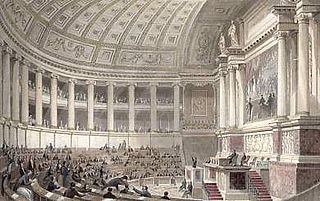 W
WChamber of Deputies was a parliamentary body in France in the nineteenth and twentieth centuries:1814–1848 during the Bourbon Restoration and the July Monarchy, the Chamber of Deputies was the lower house of the French Parliament, elected by census suffrage. 1875–1940 during the French Third Republic, the Chamber of Deputies was the legislative assembly of the French Parliament, elected by universal suffrage. When reunited with the Senate in Versailles, the French Parliament was called the National Assembly and carried out the election of the president of the French Republic.
 W
WThe Chamber of Peers was the upper house of the French parliament from 1814 to 1848.
 W
WThe Congress of the French Parliament is the name given to the body created when both houses of the present-day French Parliament—the National Assembly and the Senate—meet at the Palace of Versailles to vote on revisions to the Constitution or to listen to an address by the President of the French Republic.
 W
WThe Constitutional Council is the highest constitutional authority in France. It was established by the Constitution of the Fifth Republic on 4 October 1958 to ensure that constitutional principles and rules are upheld. It is housed in the Palais-Royal, Paris. Its main activity is to rule on whether proposed statutes conform with the Constitution, after they have been voted by Parliament and before they are signed into law by the President of the French Republic.
 W
WIn France, the Council of State is a governmental body that acts both as legal adviser of the executive branch and as the supreme court for administrative justice. Established in 1799 by Napoleon as a successor to the King's Council, it is located in the Palais-Royal in Paris and is primarily made up of top-level legal officers. The Vice President of the Council of State ranks as the ninth most important civil servant in France.
 W
WThe Council of the Republic was the upper house of the French parliament under the Fourth Republic, with the National Assembly being the lower house. It was established by the Constitution of 1946, dissolved by the Constitution of 1958 and replaced with the Senate.
 W
WThe Court of Audit is the national French administrative court charged with conducting financial and legislative audits of most public institutions and some private institutions, including the central Government, national public corporations, social security agencies, and public services. The Court is essentially a cross between a court of exchequer, comptroller general's office, and auditor general's office in common-law countries.
 W
WThe Dame du Palais, originally only Dame, was an historical office in the Royal Court of France. It was a title of a lady-in-waiting holding the official position of personal attendant on a female member of the French Royal Family. The position was traditionally held by a female member of a noble family. They were ranked between the Première dame d'honneur and the Fille d'honneur. They had previously been styled 'Dames'.
 W
WThe Declaration of the Rights of Man and of the Citizen, set by France's National Constituent Assembly in 1789, is a human civil rights document from the French Revolution.
 W
WThe Declaration of the Rights of the Man and of the Citizen of 1793 is a French political document that preceded that country's first republican constitution. The Declaration and Constitution were ratified by popular vote in July 1793, and officially adopted on 10 August; however, they never went into effect, and the constitution was officially suspended on 10 October. It is unclear whether this suspension was thought to affect the Declaration as well. The Declaration was written by the commission that included Louis Antoine Léon de Saint-Just and Marie-Jean Hérault de Séchelles during the period of the French Revolution. The main distinction between the Declaration of 1793 and the Declaration of the Rights of Man and of the Citizen of 1789 is its egalitarian tendency: equality is the prevailing right in this declaration. The 1793 version included new rights, and revisions to prior ones: to work, to public assistance, to education, and to resist oppression.
 W
WThe Élysée Palace is the official residence of the President of the French Republic. Completed in 1722, it was built for nobleman and army officer Louis Henri de La Tour d'Auvergne, who had been appointed Governor of Île-de-France in 1719. It is located on the Rue du Faubourg Saint-Honoré near the Champs-Élysées in the 8th arrondissement of Paris, the name Élysée deriving from the Elysian Fields, the place of the blessed dead in Greek mythology. Important foreign visitors are hosted at the nearby Hôtel de Marigny, a palatial residence.
 W
WThe First French Empire, officially the French Republic then the French Empire, was the empire ruled by Napoleon Bonaparte, who established French hegemony over much of continental Europe at the beginning of the 19th century. It lasted from 18 May 1804 to 11 April 1814 and again briefly from 20 March 1815 to 7 July 1815.
 W
WThe Second French Empire, was the 18-year Imperial Bonapartist regime of Napoleon III from 14 January 1852 to 4 September 1870, between the Second Republic and the Third Republic, in France.
 W
WThe Constitution of the French Republic of 27 October 1946 was the constitution of the French Fourth Republic.
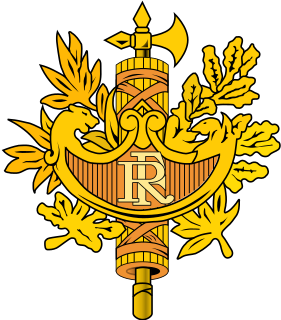 W
WThe French Parliament is the bicameral legislature of the French Republic, consisting of the Senate and the National Assembly. Each assembly conducts legislative sessions at separate locations in Paris: the Senate meets in the Palais du Luxembourg and the National Assembly convenes at Palais Bourbon.
 W
WA French passport is an identity document issued to French citizens. Besides enabling the bearer to travel internationally and serving as indication of French citizenship, the passport facilitates the process of securing assistance from French consular officials abroad or other European Union member states in case a French consular is absent, if needed.
 W
WThe graphic charter of government communication is the graphic charter of the logo of France, used by government services. It was adopted in 1999 by the government of Lionel Jospin and revolves around a logo associating Marianne, the tricolor flag and the motto Liberté, Égalité, Fraternité to represent the French Republic. A redesign of this graphic charter was carried out in 2020.
 W
WThe Great Seal of France is the official seal of the French Republic. After the 1792 revolution established the First French Republic, the insignia of the monarchy was removed from the seal. Over time, the new seal changed. At first, it featured Marianne, symbol of the revolution. It evolved to show that the people developed their culture and politics. In modern times, it depicts liberty, along with aspects of culture such as art, education, and agriculture.
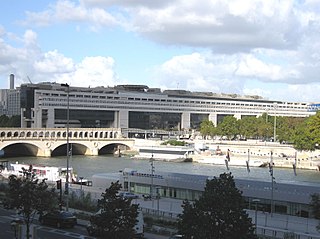 W
WThe Inspectorate General of Finances or Inspection générale des finances (IGF) is an interdepartmental auditing and supervisory body in France. Its general mission is to provide oversight, audit, analysis, consulting, and evaluation services in administrative, economic, and financial matters. In the recent years, the IGF has been at the head of the movement of modernization of the state.
 W
WJacques d'Étampes de Valençay held the French honorific titles Lord of Valençay and Grand Marshal of the Dwelling House of the King. d'Étampes de Valençay was Governor of Calais, and made a Knight of the Holy Spirit in 1619.
 W
WThe Official Journal of the French Republic, also known as the JORF or JO, is the government gazette of the French Republic. It publishes the major legal official information from the national Government of France, the French Parliament and the French Constitutional Council.
 W
WThe President of the French Republic was elected on an indirect basis during the Third Republic and Fourth Republic, as well as at the start of the Fifth Republic.
 W
WMembers of Parliament in France sit in the National Assembly, which is the lower house of the French Parliament. Members are known as deputies. The current session is the 15th legislature of the French Fifth Republic.
 W
WThe National Independent Commission Charged With Gathering Evidence to Show the Implication of the French Government in the Genocide Perpetrated in Rwanda in 1994, commonly referred to as the Mucyo Commission after its Chairman, is a Rwandan government commission established by Paul Kagame in order to ascertain the nature of French involvement in the 1994 genocide. It released a report in August 2008, 331 pages in total, claiming to detail that France was not only complicit, but had engaged in actions on the level of conspiracy to genocide. Allegations included covert weapons dealing and training of interahamwe militants before and during the genocide, providing protection and shelter for some of the worst genocidaires, illegitimate humanitarian aims during Operation Turquoise and even French black ops on the ground of Rwanda during the genocide. This report, however, has been subject to great controversy and skepticism in the international community. It has been accused of being politically charged to benefit the Rwandan Patriotic Front.
 W
WThe National Assembly is the lower house of the bicameral French Parliament under the Fifth Republic, the upper house being the Senate. The National Assembly's legislators are known as députés.
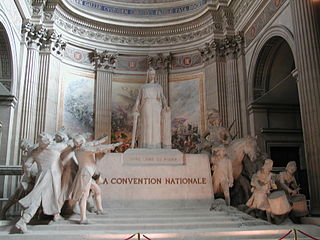 W
WThe National Convention was a parliament of the French Revolution, following the two-year National Constituent Assembly and the one-year Legislative Assembly. Created after the great insurrection of 10 August 1792, it was the first French government organized as a republic, abandoning the monarchy altogether. The Convention sat as a single-chamber assembly from 20 September 1792 to 26 October 1795.
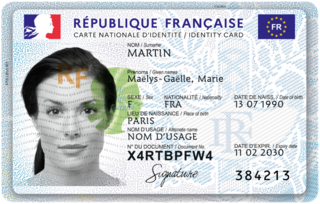 W
WThe French national identity card is an official identity document consisting of an electronic ID-1 card bearing a photograph, name and address. While the identity card is non-compulsory, all persons must possess some form of valid government-issued identity documentation.
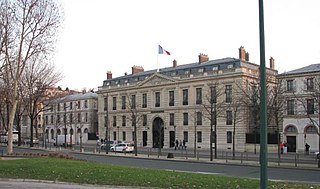 W
WThe Palais de l'Alma is a National Palace of the French Republic, located in Paris 7th arrondissement. It is close to the Musée du quai Branly, and almost in front of the Pont de l'Alma. The name of the palace comes from the Battle of the Alma.
 W
WA prefect in France is the state's representative in a department or region. Subprefects are responsible for the subdivisions of departments, arrondissements. The office of a prefect is known as a prefecture and that of a sub-prefect as a subprefecture.
 W
WThe Prefect of Ain is the highest state representative in the department of Ain on the East border of France. Its seat is in Bourg-en-Bresse.
 W
WIn France, a prefecture may be:the chef-lieu de département, the commune in which the administration of a department is located; the chef-lieu de région, the commune in which the administration of a region is located; the jurisdiction of a prefecture; the official residence or headquarters of a prefect.
 W
WPremière dame d'honneur, or simply dame d'honneur, was an office at the royal court of France. It existed in nearly all French courts from the 16th-century onward. Though the tasks of the post shifted, the dame d'honneur was normally the first or second rank of all ladies-in-waiting. The dame d'honneur was selected from the members of the highest French nobility.
 W
WThe president of France, officially the president of the French Republic, is the head of state and head of executive of France as well as the commander-in-chief of the French Armed Forces. The French presidency is the supreme magistracy of the country, and the president is the holder of the highest office in France.
 W
WIn the history of France, the First Republic, officially the French Republic, was founded on 22 September 1792 during the French Revolution. The First Republic lasted until the declaration of the First Empire on 18 May 1804 under Napoleon, although the form of the government changed several times. This period was characterized by the fall of the monarchy, the establishment of the National Convention and the Reign of Terror, the Thermidorian Reaction and the founding of the Directory, and, finally, the creation of the Consulate and Napoleon's rise to power.
 W
WThe French Second Republic was a short-lived republican government of France between 1848 and 1851. It began in February 1848, with the Revolution that overthrew the July Monarchy, and ended in December 1852, after the 1851 coup d'état and when president Louis-Napoléon Bonaparte made himself Emperor Napoleon III and initiated the Second Empire. It officially adopted the motto of the First Republic, Liberté, Égalité, Fraternité. The Second Republic witnessed the tension between the "Social and Democratic Republic" and a liberal form of republicanism, which exploded during the June Days uprising of 1848.
 W
WThe French Third Republic was the system of government adopted in France from 4 September 1870, when the Second French Empire collapsed during the Franco-Prussian War, until 10 July 1940 after France's defeat by Nazi Germany in World War II led to the formation of the Vichy government in France.
 W
WThe French Fourth Republic was the republican government of France from 27 October 1946 to 4 October 1958, governed by the fourth republican constitution. It was in many ways a revival of the Third Republic that was in place from 1870 during the Franco-Prussian War to 1940 during World War II, and suffered many of the same problems. France adopted the constitution of the Fourth Republic on 13 October 1946.
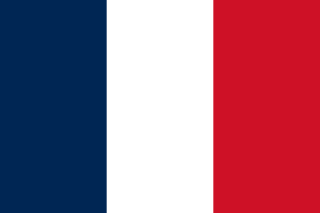 W
WThe Fifth Republic is France's current republican system of government. It was established 4 October 1958 by Charles de Gaulle under the Constitution of the Fifth Republic. The Fifth Republic emerged from the collapse of the Fourth Republic, replacing the former parliamentary republic with a semi-presidential system that split powers between a prime minister as head of government and a president as head of state. De Gaulle, who was the first French president elected under the Fifth Republic in December 1958, believed in a strong head of state, which he described as embodying l'esprit de la nation.
 W
WThe Secretariat-General for National Defence and Security is an interministerial organ under the Prime Minister of France.
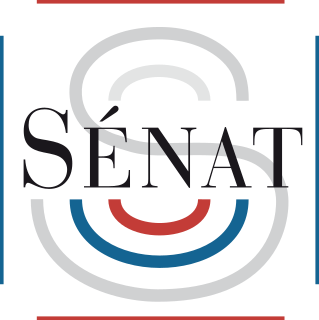 W
WThe Senate is the upper house of the French Parliament, which, along with the National Assembly—the lower chamber—constitutes the legislature of France. It is made up of 348 Senators elected by part of the country's local councillors, as well as by representatives of French citizens living abroad. Senators have six-year terms, with half of the seats up for election every three years.
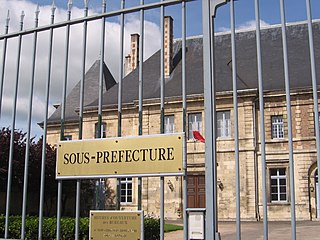 W
WIn France, a subprefecture is the commune which is the administrative centre of a departmental arrondissement that does not contain the prefecture for its department. The term also applies to the building that houses the administrative headquarters for an arrondissement.
 W
WSurintendante de la Maison de la Reine, or only Surintendante, was the senior lady-in-waiting at the royal court of France from 1619 until the French revolution. The Surintendante was selected from the members of the highest French nobility.
 W
WThe French URSSAF is a network of private organizations created in 1960 whose main task is to collect employee and employer social security contributions that finance the Régime general of France's social security system, including state health insurance.